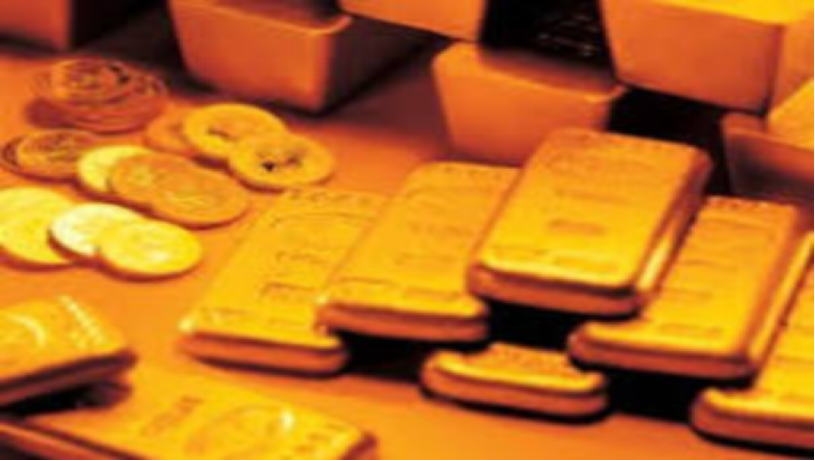
The recent rise in metal prices has dominated the headlines, but as prices of gold, silver, and copper hit new highs, traders may need to weigh the possibility of further inflation increases and reassess the impact of these trends on the global economy. During the Asian trading session, international spot gold continued its upward trend from last week, reaching a historic high of $2450 per ounce. In addition, the prices of silver, platinum, and copper have also risen. What factors have contributed to this round of upward trend?
First, precious and industrial metals, including gold, silver, platinum and copper, all rose. Gold extended last week's gains to surpass the intraday record set in April. As of around 4:30 p.m. on May 20, spot gold was hovering at $2,440 an ounce. Since the 15th, gold has started to have a round of gains. That's when the latest U.S. inflation data, the consumer price index for April, came out, showing a bigger-than-expected drop.
In addition, war is the most direct trigger. War has always been the most direct factor stimulating the surge of commodities, especially key commodities such as gold, silver, copper, tin, and nickel that can maintain long-term value. From the start of the Russo Ukrainian conflict to the outbreak of the Israeli Palestinian conflict in October last year, as well as the ongoing escalation of geopolitical events such as the Red Sea Hussain armed conflict, all provided ample reasons for hedging funds into non-ferrous metal contracts. The reason why copper futures have risen significantly more than other varieties is also due to an important "trigger", which is to "force the market short". According to reports, copper produced by Russia after April 13th cannot be used for delivery due to sanctions imposed by the UK and the US on Russia. As of last week, copper futures on the two exchanges in New York and London have attracted up to $25 billion in long positions, and the trend of forced positions is approaching step by step.
Secondly, interest rate cuts and the combination of supply and demand imbalances continue to catalyze an upward trend. In addition to the two triggers of war and forced inflation, the overall upward trend of these commodities in the past month has also been supported by expectations of interest rate cuts. Against the backdrop of consecutive record highs in gold prices, funds have also begun to shift towards silver as a long position. Now, COMEX silver futures prices have reached a new high of $32 per ounce in 11 years. But unlike gold, which is primarily used for financial investment, silver, in addition to its hedging properties, has its own industrial properties that give it better price elasticity. The industrial demand for silver covers multiple key areas, from high-tech electronic products to renewable energy, healthcare, and more. The combined effect of these demands makes the silver market diverse and highly complex.
Furthermore, not long ago, Goldman Sachs raised its forecast price for London copper from $10000 per ton to $12000 by the end of this year. Currently, London copper futures have rapidly risen to $11000. But under the stimulus of the tight market caused by the "sanctions on Russian copper", Goldman Sachs' target value is likely to be quickly breached.
Moreover, spot gold has risen by over 18%. Spot silver rose to about $31.75 per ounce, reaching a new high in 11 years. Platinum rose to over $1090 per ounce. Another noteworthy aspect is the basic metal copper, which can reflect a wide range of economic conditions. Copper futures traded on the London Metal Exchange once broke through the $1100 per ton mark. Analysis suggests that the decarbonization and electrification trends caused by the global energy transition in recent years will continue to increase demand for copper, while the lack of global investment in copper mining and related areas in the past decade will lead to a shortage of supply and demand, thereby continuing to drive up copper prices.
Overall, the major factors of geopolitical turmoil, monetary easing, and supply-demand imbalance are still significantly stimulated at present, and are expected to continue for a long time in the future. Under their combined stimulation, the global commodity super cycle represented by non-ferrous metals such as gold, silver, and copper has become unavoidable.

The office of the President of South Korea has fully initiated the relocation work, moving the office equipment of all departments from the current Yongsan Presidential Office to the former Presidential office, the Blue House.
The office of the President of South Korea has fully initia…
Israeli officials announced that Israel will reopen the bor…
US President Trump said that Russia has gained a stronger m…
The latest report from the United Nations Conference on Tra…
The UK Ministry of Defence said on Tuesday (December 9) tha…
In early December, US stocks staged their most dramatic int…